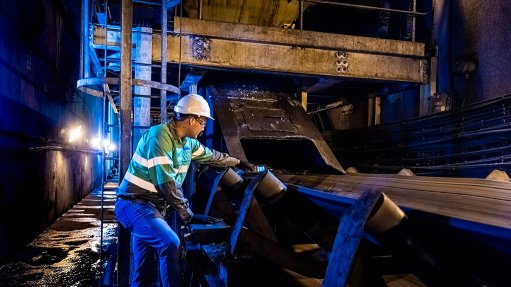
Weba engineer measuring particle size in high humidity areas to verify the impact on health and safety
Dust levels have been shown to have a serious impact on human health, especially smaller particle sizes of 0.3 micron. Dust may contain microscopic solids or liquid droplets that are small enough to be inhaled into the lungs. Spores and contaminants associated with dust and aerosol can cause a range of health problems, from respiratory infections to toxic exposure.
Using the latest dust measuring technology, Weba Chute Systems demonstrated to platinum mining customers how its custom-engineered chutes could reduce dust at transfer points. The company conducted dust assessments at mines in South Africa and Zimbabwe, in order to compare the impact of its designs on material flow and dust levels.
At the site in Zimbabwe, considerable dust levels were created at bunker discharge chutes. Material of up to 500 mm in size was moving through at a rate of 600 t/h. It found that material flow was the biggest factor generating dust in the conventional chute, as material was not flowing as evenly as it should, resulting in the release of dust particles into the surrounding atmosphere.
The installation of a Weba chute specifically designed to ensure optimal flow control, reduced dust levels by about 40%. By controlling the velocity of material, the design was able to reduce dust creation and reduce the impact and wear, allowing for increased productivity and less maintenance downtime.
At the South African operation, the tests were done at a transfer point in the milling plant where an average tonnage of 190 t/h was being moved. Despite the use of water sprays, the existing chute was still creating considerable dust. The installation of the Weba chute was able to reduce dust levels by 15%.
Weba Chute Systems develops bespoke solutions for customers’ transfer points and, when required, discrete element modelling is employed as a verification tool for designs, confirming suitability before installation.